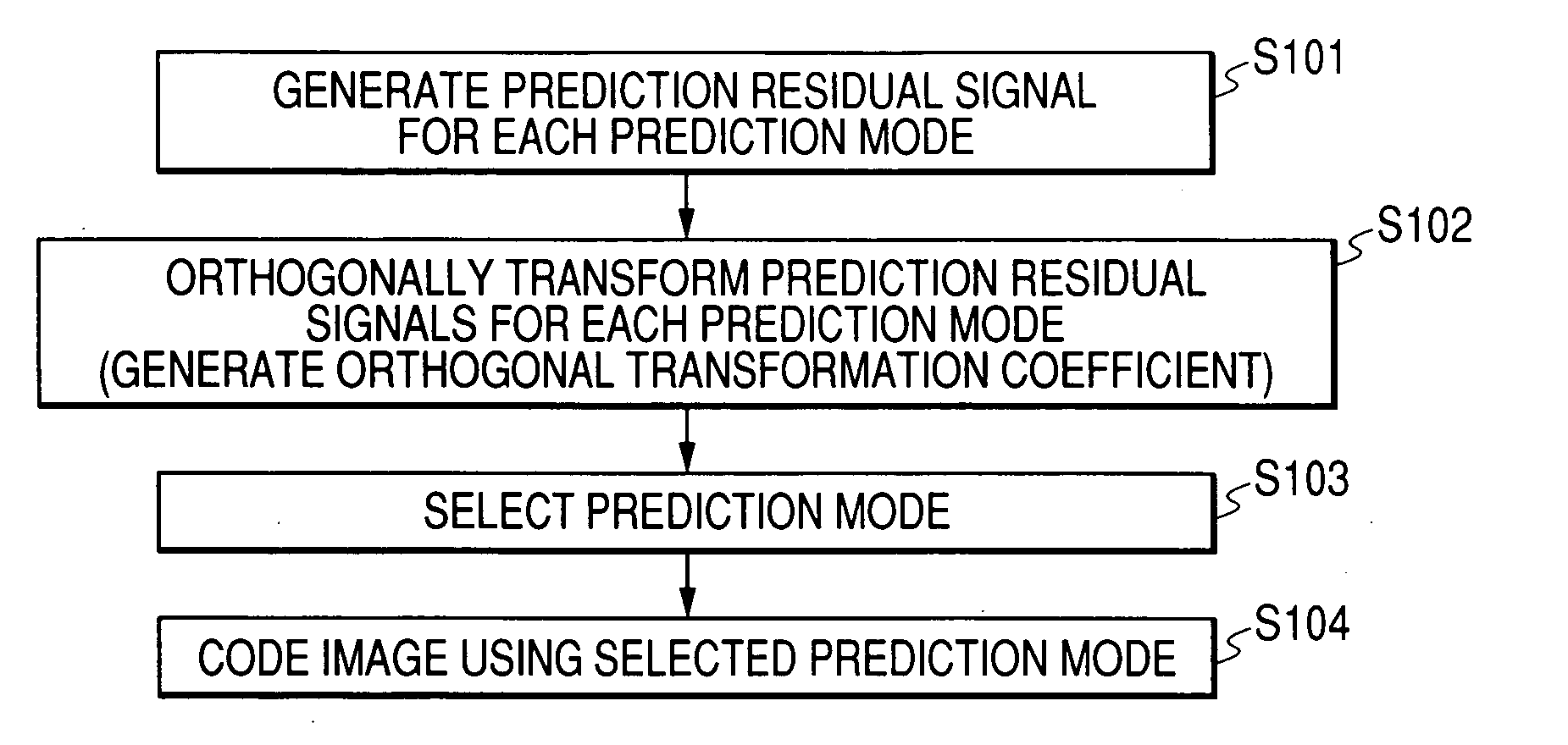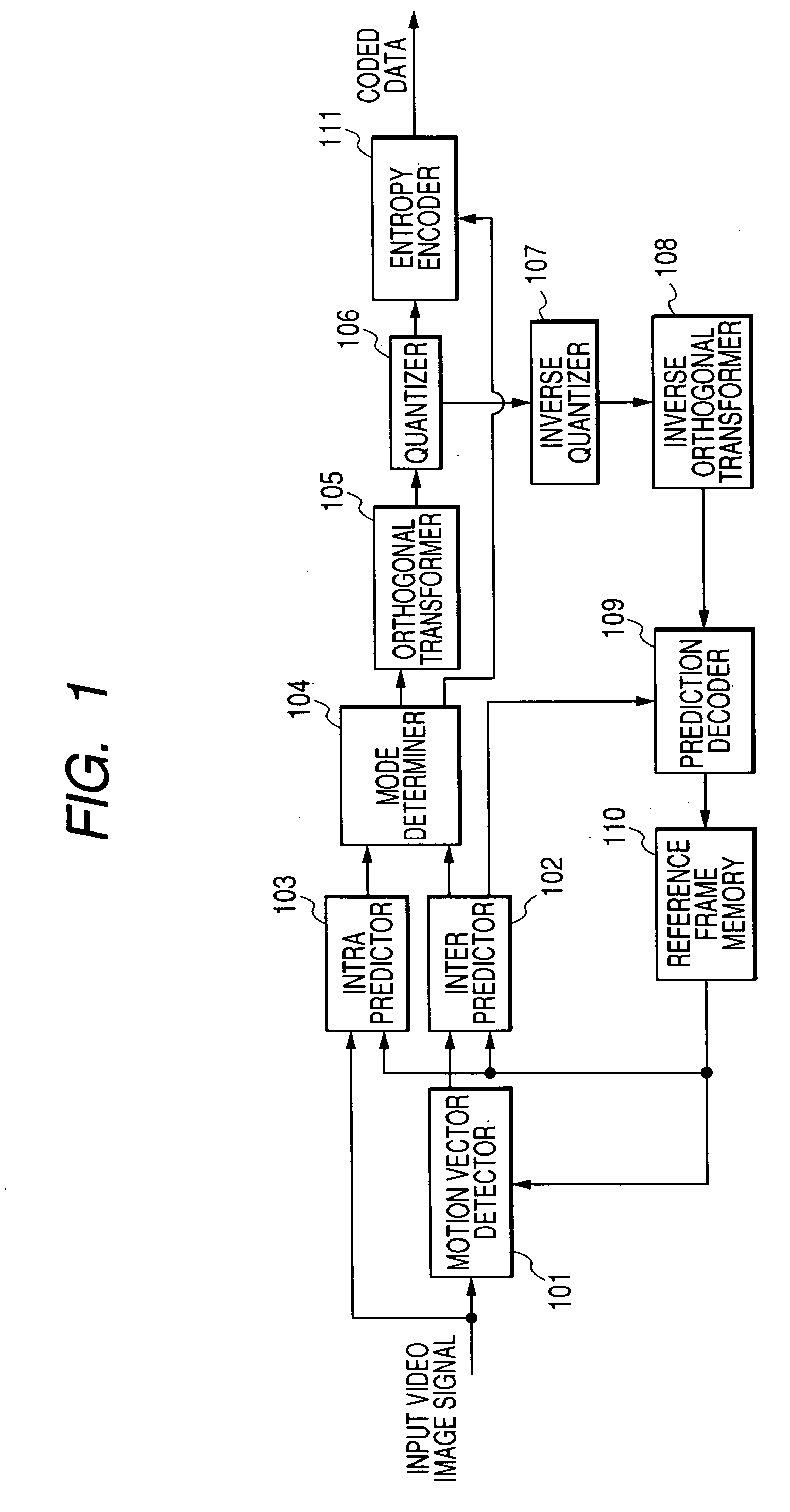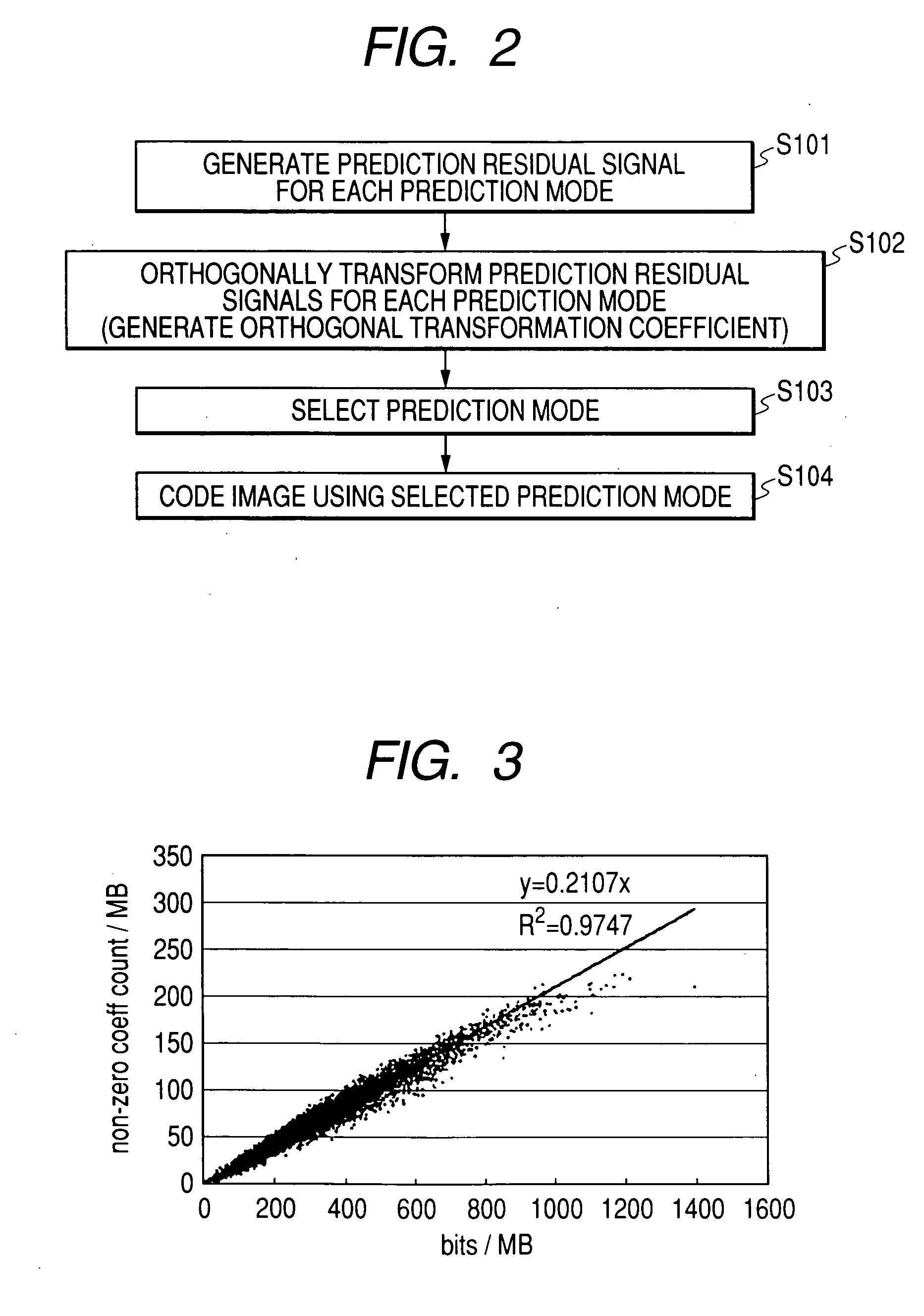Video image encoding method, video image encoder, and video image encoding program
a video image and encoder technology, applied in the field of video image encoders video image encoders, etc., can solve the problems of increasing the cost of encoders, and achieves less image quality degradation, good encoding efficiency, and increased computation or hardware scale
- Summary
- Abstract
- Description
- Claims
- Application Information
AI Technical Summary
Benefits of technology
Problems solved by technology
Method used
Image
Examples
first embodiment
[0037]FIG. 1 is a block diagram to show a configuration of a video image encoder according to a first embodiment.
[0038] The video image encoder according to the first embodiment includes a motion vector detector 101, an inter predictor (interframe predictor) 102, an intra predictor (intraframe predictor) 103, a mode determiner 104, an orthogonal transformer 105, a quantizer 106, an inverse quantizer 107, an inverse orthogonal transformer 108, a prediction decoder 109, reference frame memory 110, and an entropy encoder 111.
[0039] The operation of the video image encoder according to the first embodiment will be described with FIGS. 1 and 2. FIG. 2 is a flowchart to show the operation of the video image encoder according to the first embodiment.
[0040] When an input image signal is input to the video image encoder, the input image signal is divided into pixel blocks each of a given size and a prediction image signal is generated according to a plurality of prediction modes for each ...
second embodiment
[0063] In the first embodiment, using the fact that there is a correlation between the code amount produced by encoding the orthogonal transformation coefficient of the prediction residual signals and the number of coefficients becoming non-zero as quantization processing is performed, of the orthogonal transformation coefficients of the prediction residual signals, the number of non-zero coefficients is found for each prediction mode and the prediction mode corresponding to the smallest number of non-zero coefficients is selected.
[0064] In a second embodiment, a prediction mode selection method will be described also considering the correlation difference for each prediction mode.
[0065]FIG. 5 is a block diagram to show the configuration of a video image encoder according to the second embodiment.
[0066] The video image encoder according to the second embodiment includes a motion vector detector 201, an inter predictor 202, an intra predictor 203, a mode determiner 204, an orthogo...
third embodiment
[0081] In the second embodiment, the code amount produced by encoding each pixel block is estimated from the number of coefficients becoming non-zero as quantization processing is performed, of the orthogonal transformation coefficients of the prediction residual signals, and the prediction mode wherein the estimated code amount becomes the minimum is selected.
[0082] In a third embodiment, a method of selecting a prediction mode by also estimating the code amount produced by encoding additional information relevant to the prediction mode such as a motion vector to generate a prediction image and the number of a reference image to generate a prediction image will be described.
[0083]FIG. 7 is a block diagram to show the configuration of a video image encoder according to the third embodiment.
[0084] The video image encoder according to the third embodiment includes a motion vector detector 301, an inter predictor 302, an intra predictor 303, a mode determiner 304, an orthogonal tran...
PUM
 Login to View More
Login to View More Abstract
Description
Claims
Application Information
 Login to View More
Login to View More - R&D
- Intellectual Property
- Life Sciences
- Materials
- Tech Scout
- Unparalleled Data Quality
- Higher Quality Content
- 60% Fewer Hallucinations
Browse by: Latest US Patents, China's latest patents, Technical Efficacy Thesaurus, Application Domain, Technology Topic, Popular Technical Reports.
© 2025 PatSnap. All rights reserved.Legal|Privacy policy|Modern Slavery Act Transparency Statement|Sitemap|About US| Contact US: help@patsnap.com



